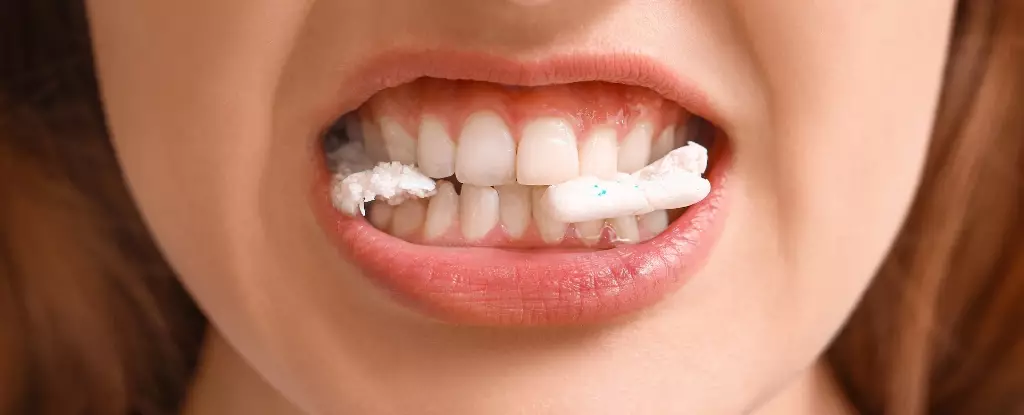Recent scientific revelations have cast a shadow on an everyday indulgence that many consider harmless: chewing gum. In a study presented by researchers from the University of California, Los Angeles (UCLA), a startling discovery was made—that chewing gum potentially releases microplastics directly into our mouths. While many consumers chew gum without a second thought, this new data suggests we might be unwittingly ingesting plastic particles that can be detrimental to our health. As microplastics infiltrate our environment at alarming rates, it’s time we reckon with the implications these findings suggest about our consumption habits and health policies.
The Unseen Reality of Microplastics
Microplastics have become ubiquitous, found everywhere from ocean depths to mountain peaks, and even within the air we inhale. Researchers have identified their presence not just in the environment, but alarmingly within human anatomy—including lungs, bloodstream, and even brain tissue. While the UCLA study, led by Sanjay Mohanty, stops short of declaring direct health risks associated with microplastics, the implications of their presence within our bodies cannot be overlooked. Is it time to take a more serious look at how we engage with these substances daily?
In conducting the pilot study, researchers had a participant consume several brands of gum, subsequently analyzing their saliva. The results revealed that an average stick of synthetic gum releases around 100 pieces of microplastic, and in some cases, numbers climbed over 600 fragments. With the average person chewing 180 sticks a year, this translates to around 30,000 microplastic particles entering our systems annually. Though these figures may appear modest in isolation compared to other sources, they present a concerning addition to an already alarming problem of microplastic exposure through various channels such as food and drink.
The Gum Composition Mystery
Investigation into the composition of chewing gum reveals a disconcerting truth: the majority of popular brands utilize synthetic ingredients derived from petroleum-based sources. While gum packaging conveniently omits mention of these materials, listing them as “gum-based,” this sleight of hand raises questions about consumer transparency and safety. The findings suggest that both synthetic and natural gums are laden with microplastics, indicating a far broader problem than many might have anticipated.
Experts like Lisa Lowe pointed out that they were surprised to find microplastics in both types of gum, signaling the potential for cross-contamination from various sources. Such revelations could suggest a broader environmental impact that extends far beyond our immediate consumption of oral products. This reality poses important questions about our environmental policies regarding plastic usage and the accountability of food manufacturers.
Response from the Industry
Responding to the study, the National Confectioners Association claimed that the researchers themselves admitted there is “no cause for alarm,” attempting to alleviate public fear surrounding the findings. While they argue that chewing gum remains safe, particularly as it has been consumed for over a century, industry narratives often strive for damage control rather than proactive safety measures. The truth remains—consumers have a right to know what they’re putting into their bodies, and refusal to disclose detailed ingredient compositions undermines that right.
Furthermore, the environmental consequences of chewing gum warrant urgent attention. Each piece discarded improperly can contribute significantly to litter, with millions of discarded chewing gum pieces transforming urban landscapes into plastic-riddled environments. As Lowe pointed out, the act of spitting gum out onto sidewalks not only reflects a temporary indulgence but creates a long-lasting impact on the sustainability of our shared spaces.
The Need for Consumer Awareness
These findings emphasize the necessity for consumer education and awareness of what we are ingesting while engaging in seemingly innocuous activities. As microplastics permeate everyday life, we must scrutinize our consumption habits and advocate for greater regulation and transparency from food producers. In a world increasingly overwhelmed by plastic pollution, understanding the intricate connections between our lifestyles and health is not just prudent—it’s imperative.
As we navigate this complex relationship between pleasure and health, it’s essential to weigh the joy of chewing gum against the potential risks associated with hidden contaminants. Awareness may not eliminate the issue, but it can certainly empower consumers to make informed decisions, prioritizing health over habit in our rapidly evolving world.


Leave a Reply